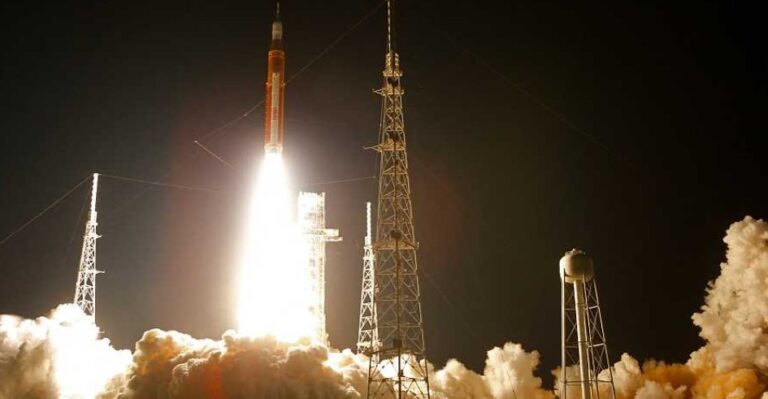
UHD arrives at Artemis I and the World Cup on the “Presidents’ Day” of the 4K HDR Summit
- NASA, which launched the Artemis I mission yesterday, has offered images of space, exclusively, in UHD.
- Tonio Di Stefano, Director of Networks and Platforms at RAI and President of Ultra HD Forum Italia, has confirmed that RAI will show the World Cup in Qatar in 4K.
- The tense debate on the European regulation of 8K by the European Union has also been the protagonist in this penultimate day of the 4K HDR Summit.
The eighth edition of the 4K HDR Summit is standing out for exclusively offering great news related to audiovisual productions. In the traditional “Presidents’ Day” NASA has advanced the new technologies that will be used in the Artemis I mission, which was launched yesterday. In addition, Carlos Fontanot, Director of Images of the International Space Station (ISS), has also advanced other large audiovisual projects in which the American Space Agency is working.
Ultra High Definition has conquered space
One of the highlights of this day has been the intervention of NASA. Carlos Fontanot has detailed numerous aspects in relation to the use of Ultra High Definition by NASA in imminent special missions and has also made reference to the Artemis I mission.
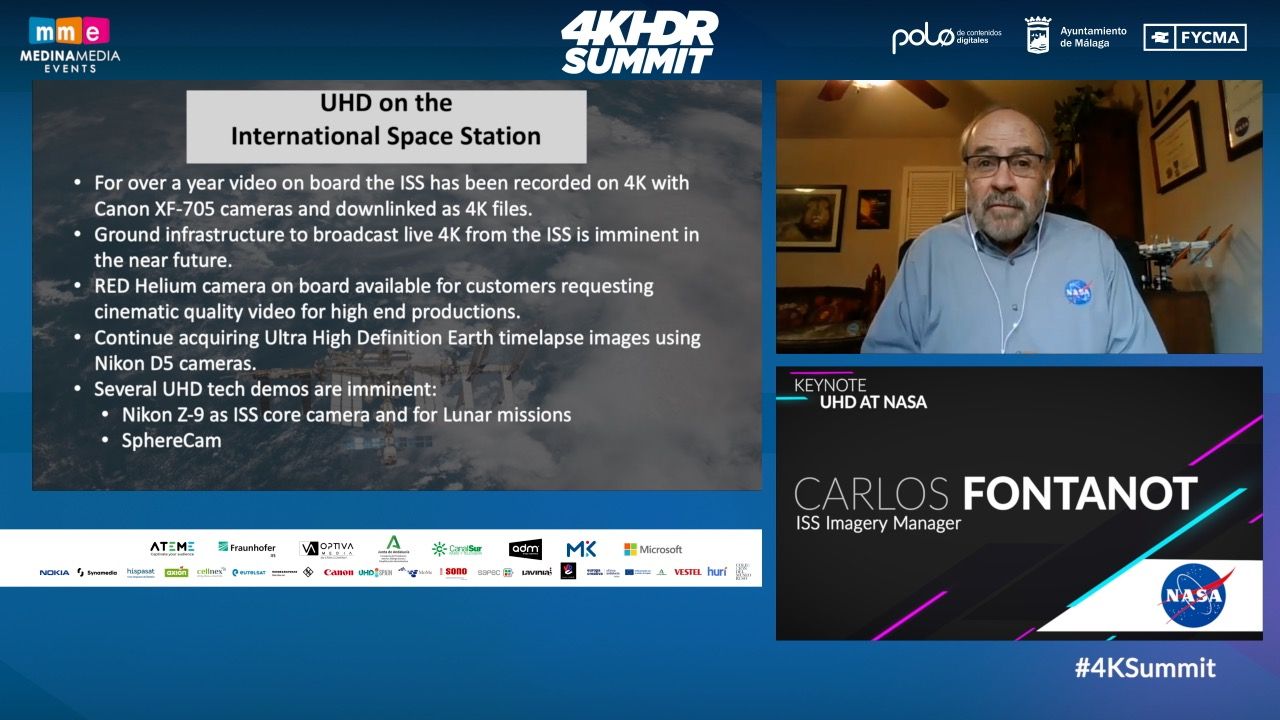
Regarding Artemis I, the American Space Agency has already announced that the goal is to return to the Moon in the year 2024. Fontanot has advanced that “NASA is going to need, of course, new technologies. They are testing Virtual Reality cameras that can be very useful in this next lunar trip. In conclusion, the ISS is being a great source of testing for this return to the Moon.
At present, NASA already has “a 24-hour channel that transmits images recorded in 4K. It has cameras both on the ISS and at the Johnson Space Center. And of course, the Agency has already published on several occasions wonderful images of the Moon, showing everything that the astronauts saw aboard the Apollo missions”, said Fontanot. For its part, for the aforementioned Artemis I program, “NASA intends to document it in 8K“, Fontanot declared.
Carlos Fontanot has also talked about major projects that NASA is carrying out. “A very exciting project we have is the SphereCam. It will open at Madison Square Garden in Las Vegas in 2023 and will feature the largest dome-shaped structure on Earth, as well as the largest LED screen in terms of resolution. The intention with this project is to record videos in a ‘spherical’ format on the ISS and then show them in productions that are projected in this kind of theater”, Fontanot stated.
Another of the great innovations that Carlos Fontanot has offered has been the construction of “a terrestrial infrastructure to transmit live in 4K from the International Space Station in the imminent future. In addition, we have the 8K RED Helium camera on board, which will be available for customers who want cinematic quality videos for high-end productions.”
NASA has also presented other projects in which it is immersed and the most important that they have carried out in 2022. For example, “the use of 4K cameras in drones to capture the activities of the crew prior to launch, in the launch pad and take off. As for this year, the International Space Station hosted the first private mission of Axiom-1 astronauts, in May 2022; the first images from the James Webb Telescope and the success of the DART mission”, said Fontanot.
The World Cup in Qatar in 4K
If on the opening day RTVE made it official that the Soccer World Cup in Qatar was going to be offered in 4K for all of Spain, on this fourth day, “Presidents’ Day”, Tonio Di Stefano, Director of Networks and Platforms of RAI (Radiotelevisione Italiana), has confirmed that the Qatar World Cup will also be broadcast in Italy in 4K format through RAI: “We are going to broadcast 56 of the 64 matches in 4K. We have not been able to broadcast them all because there are games that are played at the same time and we have had to choose. We cannot duplicate the stream in 4K. We will use the satellite as the main platform for transmission.” As he has recognized, “it is a great challenge” for RAI and for Italy.
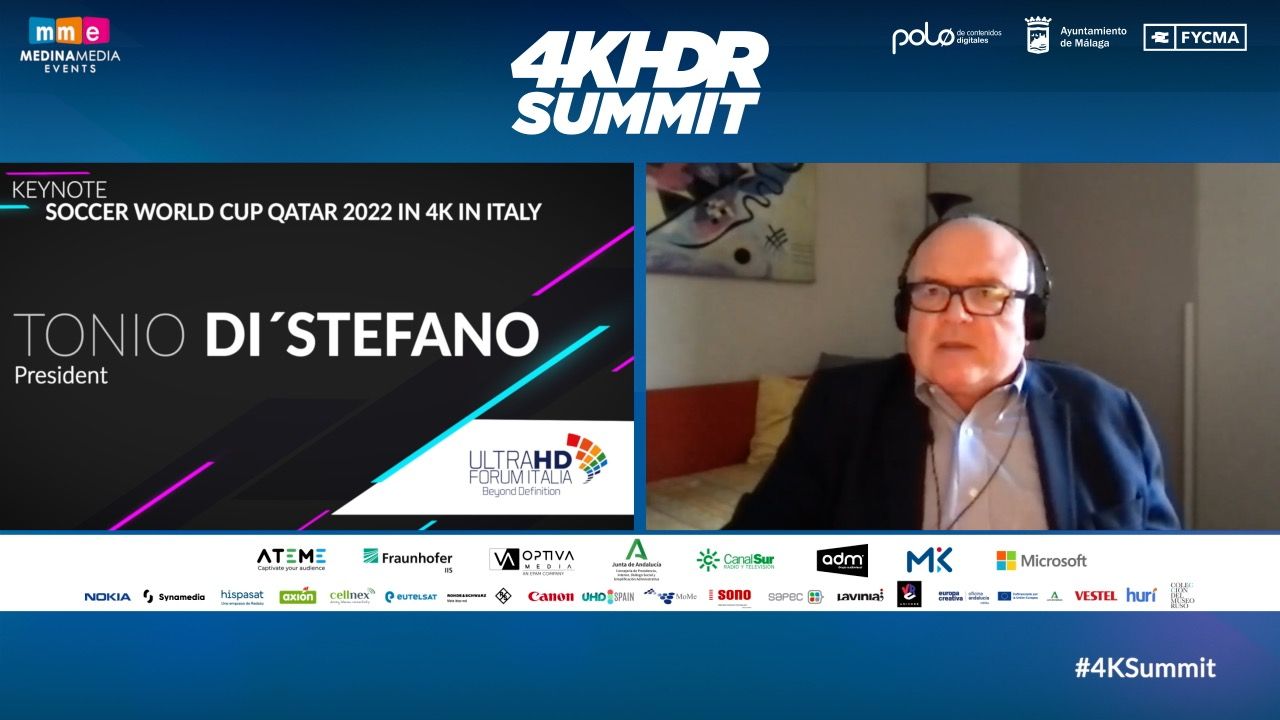
Di Stefano has commented that this historic transmission will be carried out through “The RAI 4K Channel since it is the best application for the 4K format”. In addition, Di Stefano has confirmed that the main broadcast of the Qatar World Cup in 4K will be via satelite: “We will use the RAI 4K channels on Tivùsat, LCN number 210. That is, we will use the satellite as the main platform for 4K transmission. We will also use RAI 4K streaming over HBBTV with the RAI app (RaiTV+).”
The Italian soccer team is not playing in this World Cup, but RAI has provided a great solution to this problem, as Di Stefano has commented: “If we talk about the Italian team playing in the World Cup, we would crush the network in 4K. But the Italian team is not in the 2022 World Cup, so we want to do an experiment to surprise users with these broadcasts, especially for IP streaming.”
In addition, looking to the future, Di Stefano claims that 4K is here to stay. “We want 4K to be, from now on, the new normality, but to do so, we must move towards the good diffusion of the technology.”
The three great associations of 4K and 8K on “Presidents’ Day”
On this traditional “Presidents’ Day” the three major associations of Ultra High Definition and 8K worldwide did not want to miss out either: Ultra UHD Forum, 8K Association and UHD Alliance.
Ultra HD Forum, after more than seven years working in the world of UHD, has had the opportunity to verify certain changes that have been taking place over time. Its former President, Thierry Fautier, has commented on the state in which UHD is in this year 2022: “Ultra High Definition has entered a maturation process. IP production, streaming mode and OTT are hot topics today.”
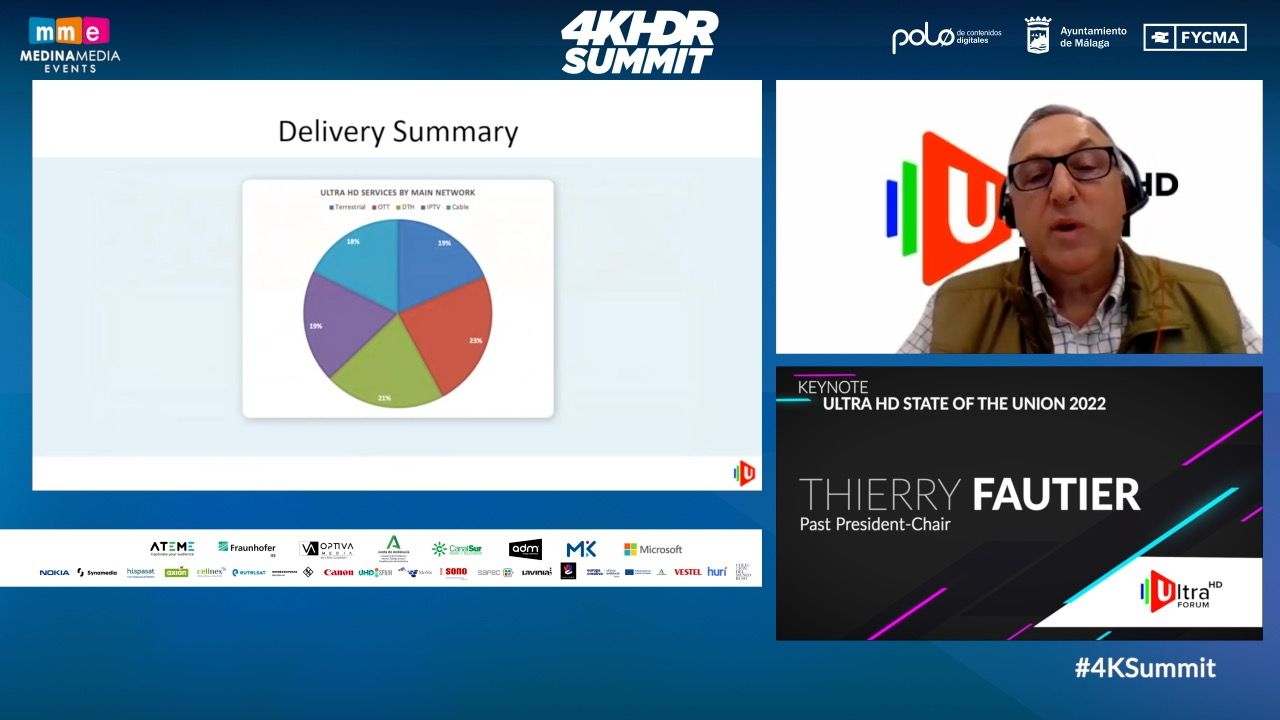
Undoubtedly, just as in recent times there have been changes, Fautier himself also believes that the same will happen in the future. To put it in context, he gives the example of the new system that Brazil will use in an estimated time of two years. “Brazil has decided to build the new hybrid transmission broadband system that will support up to 8K. They intend to make it effective in 2024 and they could broadcast at about 4-5 megabytes for each of the UHD channels ”.
For his part, Michael Hoog, President of the UHD Alliance Promotions Group, spoke about one of the most important creations in the history of this Association. Under the name of Filmmaker Mode, it was intended to “preserve the aspect ratio. We wanted the colors and frame rates to be just right without motion interpolation, noise reduction, and having other image processing.” In short, “it allows viewing at home while preserving the content as it was shot, also counting on the support of the film community.”
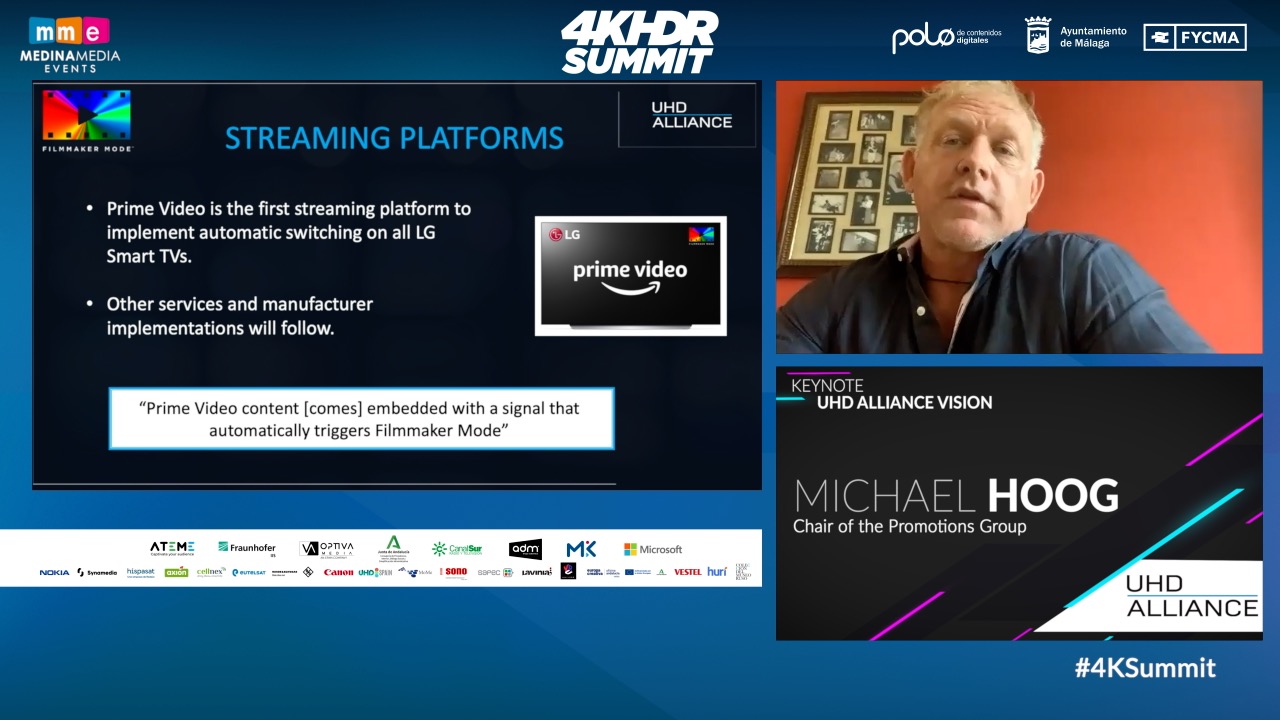
The acceptance of this mode has been quite interesting, and as Hoog himself reveals, they are confident that it can continue to grow in 2023. “Most of the leading television brands are adopting Filmmaker Mode. The ecosystem continues to grow and the mode has been implemented on televisions, projectors or streaming platforms. However, we hope that next year it will continue to grow with television manufacturers that have not yet adopted it”.
Also, Chris Chinnock, Executive Director of the 8K Association, has spoken of the great work that this Association is doing after almost four years of life. “We continue under the same premise of educating consumers and professionals about 8K“, although he has revealed that he wants more in the future. “We have great representation in the ecosystem. We have content creators, distribution companies, technology providers, etc. In short, we have great representation from everyone except the Industry itself. Of course we always want more.”
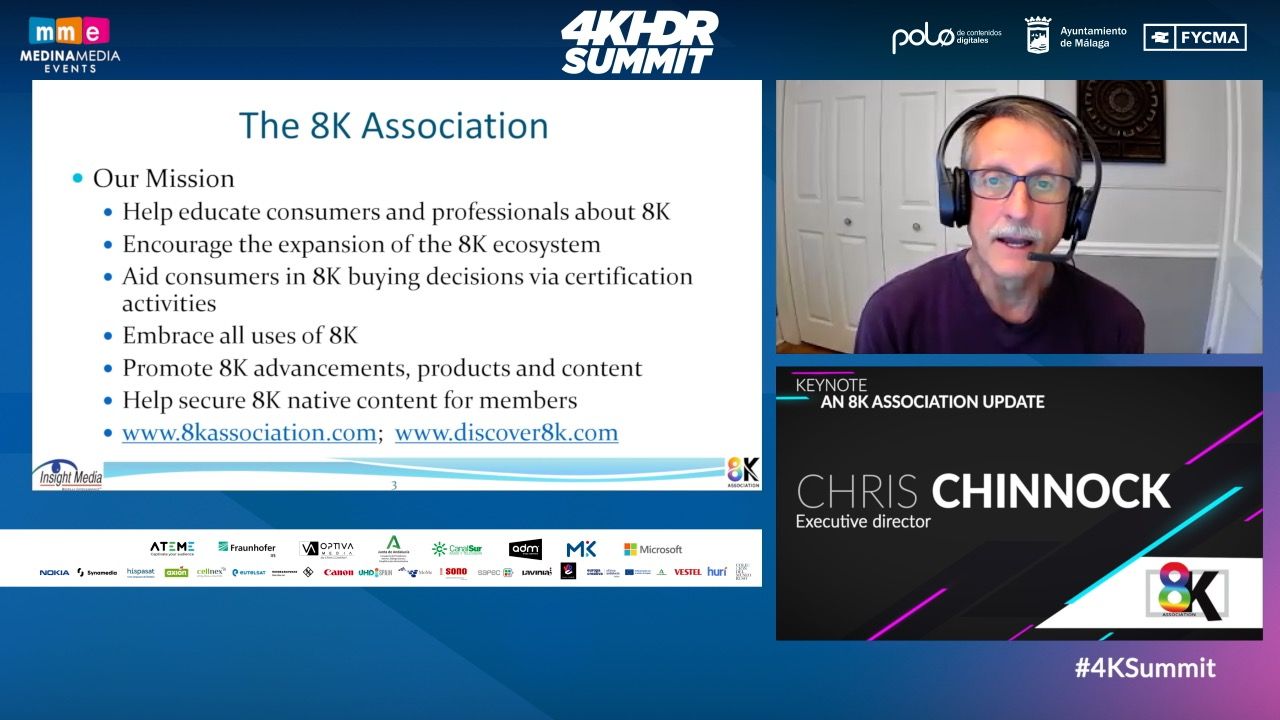
The ban on 8K TVs
On the other hand, the 8K Association has left an interesting reflection on the European regulation of 8K televisions and the future of these in the market. For Chinnock, “the measure that has been taken has to do with television consumption. The problem is that the time when the regulation and limits for 8K televisions were established was in 2017. At that time, 8K televisions were not sold and there was not enough data on them, so they decided that they should consume the same as 4K . This is a serious problem because there are no 8K TVs that can meet these requirements.”
Is 8K production difficult and expensive
At first glance, one might think that production in a quality as new and demanding as 8K can be extremely expensive. However, Takeshi Shibasaki, head of NHK’s 8K Programming and Distribution Center, has made it clear, on this fourth day, that this is not entirely the case. “The 8K production environment has changed dramatically over the past two years. In fact, 8K production may have become as easy as 2K and 4K production.”
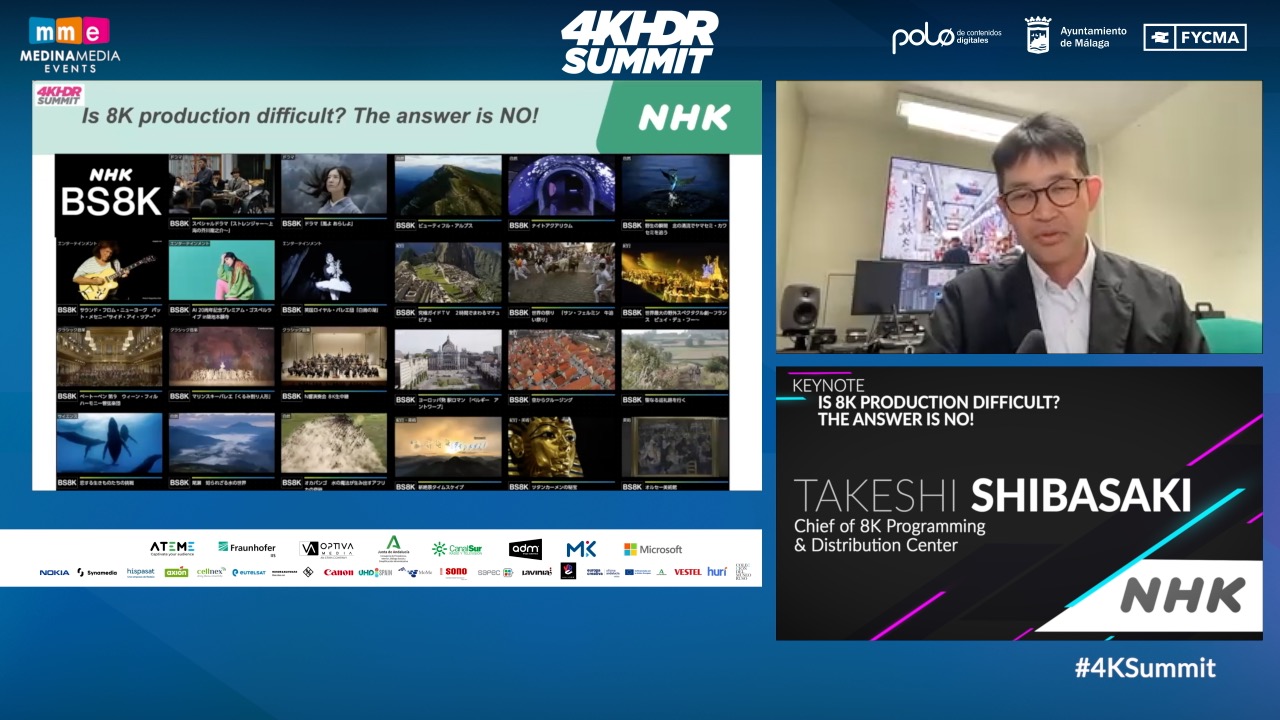
Like everything, technology has evolved over the years, and that is why 8K production has become much easier. “Before there were problems: the 8K image was difficult to record, it could not be edited, there was no channel to transmit and it was very expensive. Now, in this two-year development, the change has been rapid. The programs are easy to do, and the cost can still be low.” For Shibasaki “8K has many possibilities.”
Africa, in 8K
8K is becoming more and more present, so much so that it is going to reach Africa. This has been advanced by Olivier Chiabodo, Founder and CEO of The Explorers: “One of the most interesting projects in which we are immersed is recording Africa in 8K.” And this historic project is a matter of months: “For 2023 we have reached an agreement with the African Union and for the next five years we will be recording the 55 African countries. We will record the entire continent in 8K, starting with Senegal and Uganda,” says Chiabodo. However, this project is a very risky challenge due to one of the great problems that the African continent suffers: “We have the problem of the wars that some countries are going through, so it is possible that at this time we can only record 45 to 50 countries. We want to record all the culture, nature and historical human aspects of Africa. We will give them a lot of the content for free.”
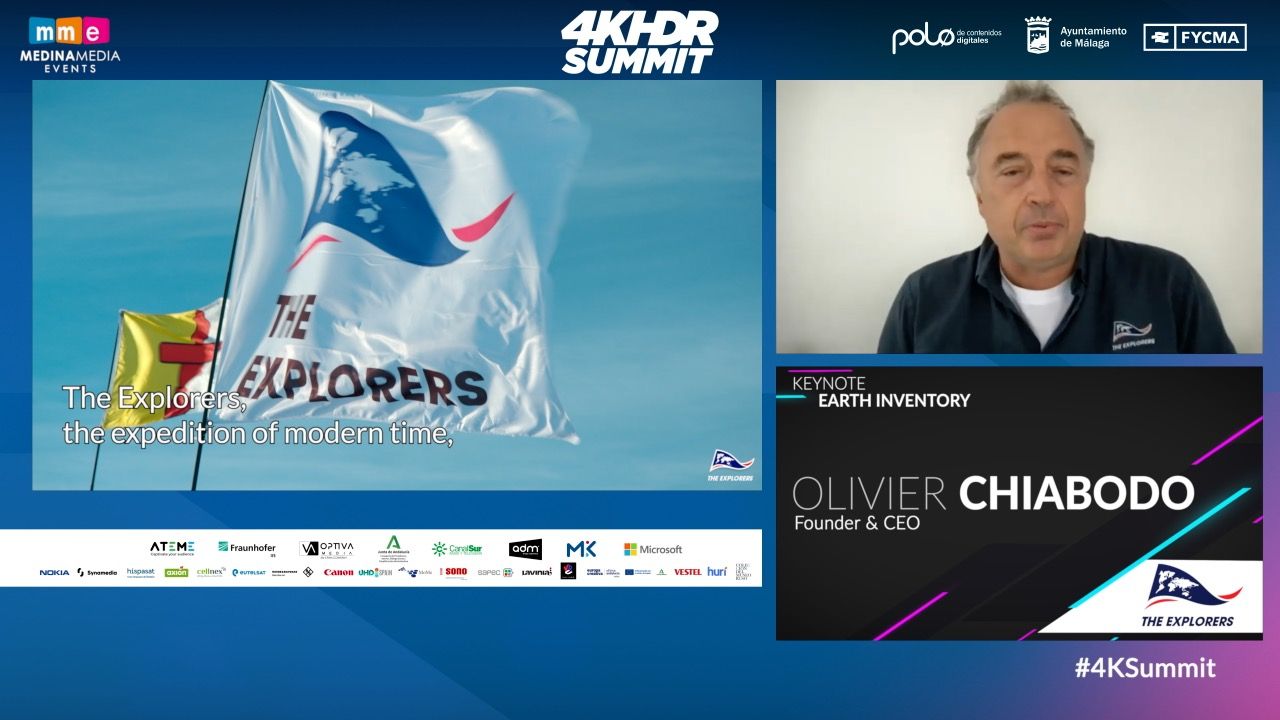
On the other hand, also related to 8K, Olivier has spoken about the European regulation that can prevent the sale of 8K televisions. “I trust and hope that big companies like Sony or Samsung will work on the 8K television screen format so that they can be allowed in Europe“. “I think that 8K in about 5 or 10 years is going to be the high-level format. I always prefer 8K because it is the best quality, nowadays”
In relation to this issue, Prashant Chotani, Founder and CEO of Travelxp, has also left his point of view. “If the European Commission bans the sale of 8K TVs, manufacturers must come up with a solution. It remains to be seen if they can make 8K televisions consume less but have the same quality in that number of pixels. It is a technological challenge. I remember a few years ago that the same thing was also discussed about the consumption of 4K televisions.
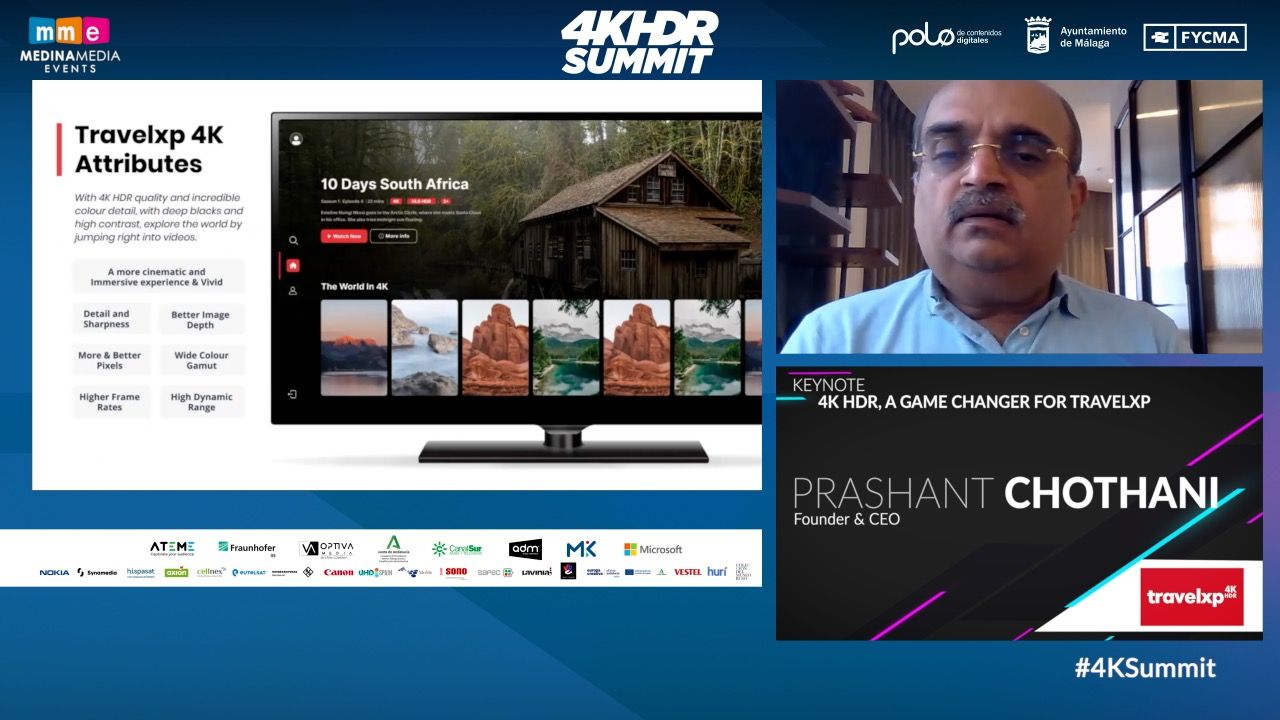
Chothani is optimistic that a solution can be found sooner rather than later. “Technologically, things are getting more and more advanced so they may be able to conform to the limits set by the Commission. I think everything will be fine. If they do not succeed and 8K leaves the market, the ecosystem itself would have a problem, so the Commission must make a decision as soon as possible.
Andalusia bets on 4K
On the other hand, on this “Presidents’ Day”, Rafael Porras, Chairman of the Board of Directors of RTVA, opened the fourth session. He highlighted “the commitment to innovation of Radio Televisión Andaluza”, as it has been possible to verify when talking about “Canal Sur Más, an updated window with the latest technology of our on-demand digital service”. In addition, it has announced that in 2022 “DTT broadcasts have been expanded in UHD tests in all the capitals of the eight Andalusian provinces, through the Axión and Cellnex issuers”.
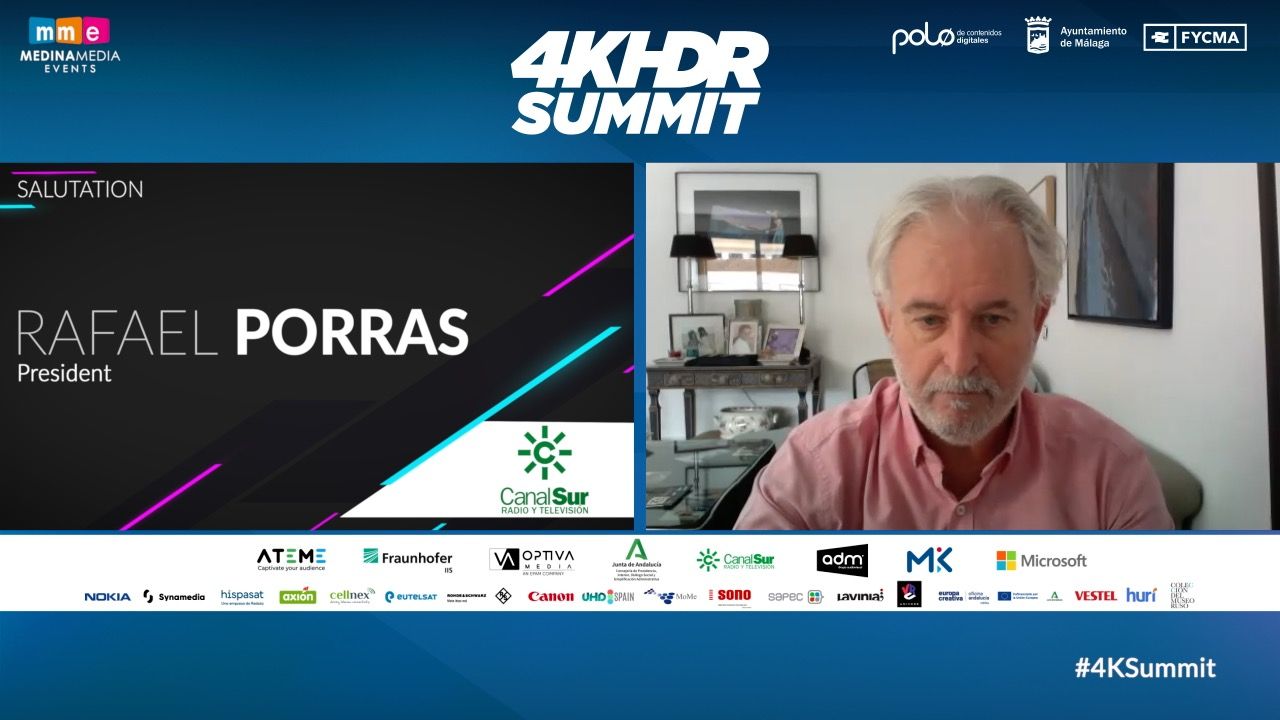
Porras has revealed the main objective they have with Canal Sur Más: “We intend to value the audiovisual archive generated over the last 30 years and offer the digital repository of the creators of the Andalusian audiovisual sector. Of course with content also in 4K”. And the figures of this Andalusian platform are outstanding: “It is already broadcast in 60 cities of the 17 autonomies, the millions of Spaniards who already have 4K televisions in their homes can verify the quality of Ultra High Definition with productions that are mostly they are MADE IN ANDALUSIA”, affirms Rafael Porras.
This traditional “Presidents’ Day” and tomorrow’s conference, which will have the Ministry of Economic Affairs and Digital Transformation, as well as the UHD Spain Association, as protagonists can be followed through the Medina Media Events platform, prior registration, at through the event website. The eighth edition of the 4K HDR Summit has the support of: National Pole of Digital Content, Malaga City Council, Fycma, Junta de Andalucía, ATEME, Fraunhofer, Optiva Media, Canal Sur Radio y Televisión, Grupo ADM, Mediakind, Microsoft, Synamedia, Nokia, Hispasat, Axión, Cellnex, Eutelsat, Rohde & Schwarz, Canon, Sapec, Mome, Vestel, SONO, Hurí, Lavinia, Univrse, Russian Museum Collection, UHD Spain and Creative Europe Media Desk Andalusia.



